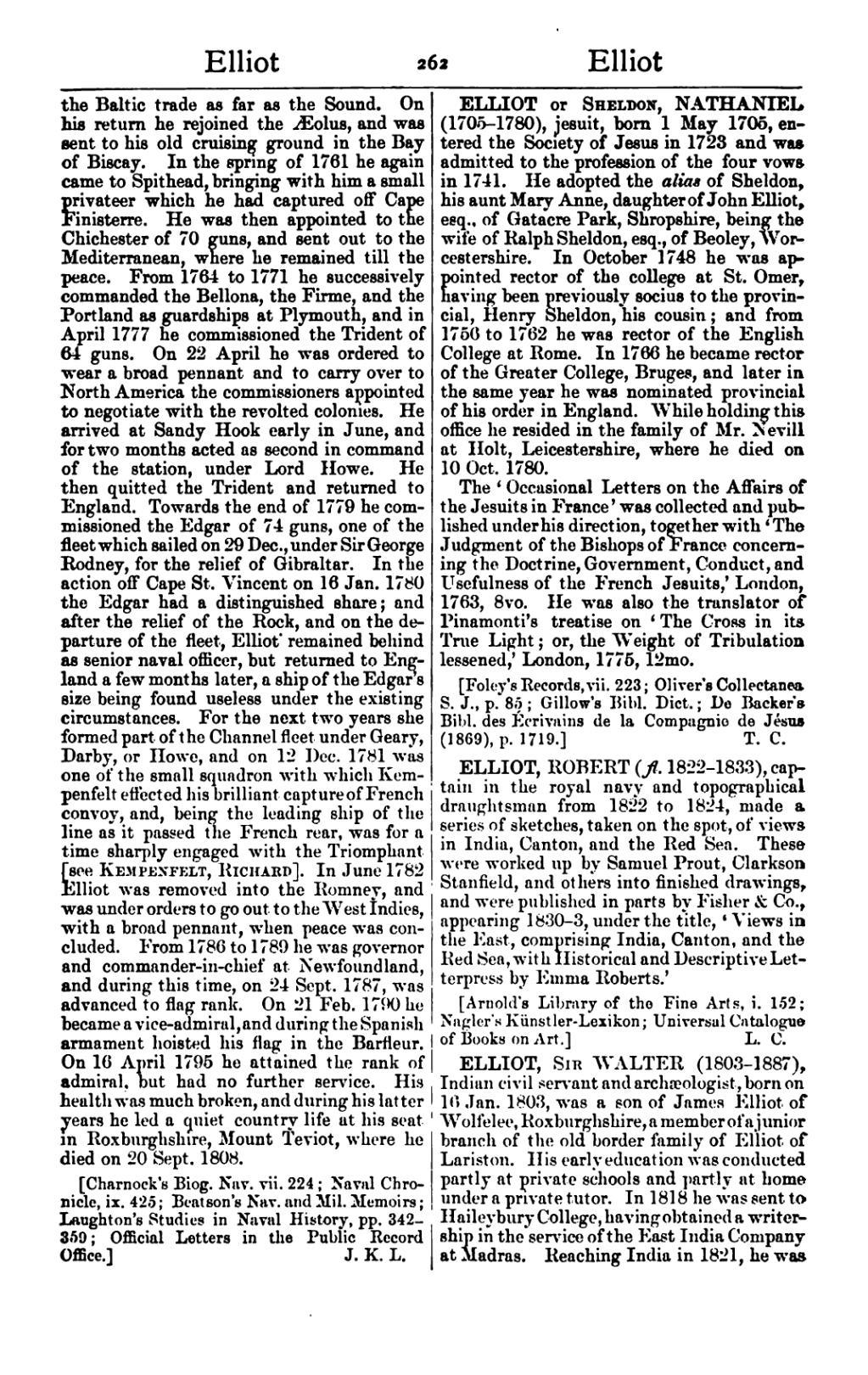the Baltic trade as far as the Sound. On his return he rejoined the Æolus, and was sent to his old cruising ground in the Bay of Biscay. In the spring of 1761 he again came to Spithead, bringing with him a small privateer which he had captured off Cape Finisterre. He was then appointed to the Chichester of 70 guns, and sent out to the Mediterranean, where he remained till the peace. From 1764 to 1771 he successively commanded the Bellona, the Firme, and the Portland as guardships at Plymouth, and in April 1777 he commissioned the Trident of 64 guns. On 22 April he was ordered to wear a broad pennant and to carry over to North America the commissioners appointed to negotiate with the revolted colonies. He arrived at Sandy Hook early in June, and for two months acted as second in command of the station, under Lord Howe. He then quitted the Trident and returned to England. Towards the end of 1779 he commissioned the Edgar of 74 guns, one of the fleet which sailed on 29 Dec., under Sir George Rodney, for the relief of Gibraltar. In the action off Cape St. Vincent on 16 Jan. 1780 the Edgar had a distinguished share; and after the relief of the Rock, and on the departure of the fleet, Elliot remained behind as senior naval officer, but returned to England a few months later, a ship of the Edgar's size being found useless under the existing circumstances. For the next two years she formed part of the Channel fleet under Geary, Darby, or Howe, and on 12 Dec. 1781 was one of the small squadron with which Kempenfelt effected his brilliant capture of French convoy, and, being the loading ship of the line as it passed the French rear, was for a time sharply engaged with the Triomphant [see Kempenfelt, Richard]. In June 1782 Elliot was removed into the Romney, and was under orders to go out to the West Indies, with a broad pennant, when peace was concluded. From 1786 to 1780 he was governor and commander-in-chief at Newfoundland, and during this time, on 24 Sept. 1787, was advanced to flag rank. On 21 Feb. 1790 he became a vice-admiral, and during the Spanish armament hoisted his flag in the Barfleur. On 16 April 1795 he attained the rank of admiral, but had no further service. His health was much broken, and during his latter years he led a quiet country life at his seat in Roxburghshire, Mount Teviot, where he died on 20 Sept. 1808.
[Charnock's Biog. Nav. vii. 224; Naval Chronicle, ix. 425; Beatson's Nav. and Mil. Memoirs; Laughton's Studies in Naval History, pp. 342-350; Official Letters in the Public Record Office.]
ELLIOT or Sheldon, NATHANIEL (1705–1780), Jesuit, born 1 May 1705, entered the Society of Jesus in 1723 and was admitted to the profession of the four vows in 1741. He adopted the alias of Sheldon, his aunt Mary Anne, daughter of John Elliot, esq., of Gatacre Park, Shropshire, being the wife of Ralph Sheldon, esq., of Beoley, Worcestershire. In October 1748 he was appointed rector of the college at St. Omer, having been previously socius to the provincial, Henry Sheldon, his cousin; and from 1756 to 1762 he was rector of the English College at Rome. In 1766 he became rector of the Greater College, Bruges, and later in the same year he was nominated provincial of his order in England. While holding this office he resided in the family of Mr. Nevill at Holt, Leicestershire, where he died on 10 Oct. 1780.
The 'Occasional Letters on the Affairs of the Jesuits in France' was collected and published under his direction, together with 'The Judgment of the Bishops of France concerning the Doctrine, Government, Conduct, and Usefulness of the French Jesuits,' London, 1763, 8vo. He was also the translator of Pinamonti's treatise on 'The Cross in its True Light; or, the Weight of Tribulation lessened,' London, 1775, 12mo.
[Foley's Records, vii. 223; Oliver's Collectanea S. J., p. 85; Gillow's Bibl. Dict.; De Backer's Bibl. des Ecrivains de la Compagnie de Jésus (1869), p. 1719.]
ELLIOT, ROBERT (fl. 1822–1833), captain in the royal navy and topographical draughtsman from 1822 to 1824, made a series of sketches, taken on the spot, of views in India, Canton, and the Red Sea. These were worked up by Samuel Prout, Clarkson Stanfield, and others into finished drawings and were published in parts by Fisher & Co., appearing 1830-3, under the title, 'Views in the East, comprising India, Canton, and the Red Sea, with Historical and Descriptive Letterpress by Emma Roberts.'
[Arnold's Library of the Fine Arts, i. 152; Nagler's Künstler-Lexikon; Universal Catalogue of Books on Art.]
ELLIOT, Sir WALTER (1803–1887), Indian civil servant and archæologist, born on 16 Jan. 1803, was a son of James Elliot of Wolfelee, Roxburghshire, a member of a junior branch of the old border family of Elliot of Lariston. His early education was conducted partly at private schools and partly at home under a private tutor. In 1818 he was sent to Haileybury College, having obtained a writership in the service of the East India Company at Madras. Reaching India in 1821, he was
